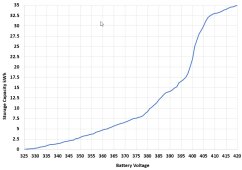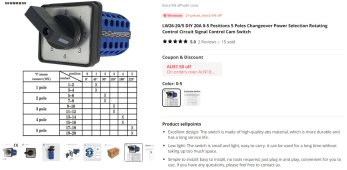Have decided to add extra storage capacity to existing system by using a HV LiFePo battery system. This has been a thought for a while but lack of a reasonably priced HV BMS has prevented it . The new Heltec HV BMS looks ideal for this build. Heltec BMS link
Cells will be 50 Ah with 5 packs of 24S making 120S in total or 420V in total for 3.5V/cell fully charged. The capacity will be 19.2 kWh. This new battery will be paralleled with my existing LiIon pack comprising of 100S 10P using 50E cells which has identical fully charged total voltage of 420V. My current hybrid inverter has a maximum battery charge voltage of 420V and a low voltage cut-out of 315V which equates to 2.63V for the new HV LiFePo battery.
Attached is the basic schematic diagram of the new battery . All bits have been ordered from China with some arrived . Happy to discuss the schematic concepts if any queries.
This is not a build that people should follow unless they fully understand HV DC risks and equipment considerations.
I will add posts during the build any any issues that arise.
Cheers from sunny Perth Australia
Cells will be 50 Ah with 5 packs of 24S making 120S in total or 420V in total for 3.5V/cell fully charged. The capacity will be 19.2 kWh. This new battery will be paralleled with my existing LiIon pack comprising of 100S 10P using 50E cells which has identical fully charged total voltage of 420V. My current hybrid inverter has a maximum battery charge voltage of 420V and a low voltage cut-out of 315V which equates to 2.63V for the new HV LiFePo battery.
Attached is the basic schematic diagram of the new battery . All bits have been ordered from China with some arrived . Happy to discuss the schematic concepts if any queries.
This is not a build that people should follow unless they fully understand HV DC risks and equipment considerations.
I will add posts during the build any any issues that arise.
Cheers from sunny Perth Australia






